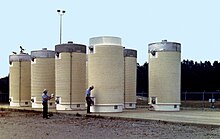
Radioactive waste is a type of hazardous waste that contains radioactive material. Radioactive waste is a result of many activities, including nuclear medicine, nuclear research, nuclear power generation, nuclear decommissioning, rare-earth mining, and nuclear weapons reprocessing. The storage and disposal of radioactive waste is regulated by government agencies in order to protect human health and the environment.

The Yucca Mountain Nuclear Waste Repository, as designated by the Nuclear Waste Policy Act amendments of 1987, is a proposed deep geological repository storage facility within Yucca Mountain for spent nuclear fuel and other high-level radioactive waste in the United States. The site is on federal land adjacent to the Nevada Test Site in Nye County, Nevada, about 80 mi (130 km) northwest of the Las Vegas Valley.

The Ignalina Nuclear Power Plant is a decommissioned two-unit RBMK-1500 nuclear power station in Visaginas Municipality, Lithuania. It was named after the nearby city of Ignalina. Due to the plant's similarities to the infamous Chernobyl Nuclear Power Plant in both reactor design and lack of a robust containment building, Lithuania agreed to close the plant as part of its accession agreement to the European Union. Unit 1 was closed in December 2004; Unit 2, which counted for 25% of Lithuania's electricity generating capacity and supplied about 70% of Lithuania's electrical demand, was closed on December 31, 2009. Proposals have been made to construct a new nuclear power plant at the same site, but plans have not materialised since then.

The San Onofre Nuclear Generating Station (SONGS) is a permanently closed nuclear power plant located south of San Clemente, California, on the Pacific coast, in Nuclear Regulatory Commission Region IV. The plant was shut down in 2013 after defects were found in replacement steam generators; it is currently in the process of decommissioning. The 2.2 GW of electricity supply lost when the plant shut down was replaced with 1.8 GW of new natural-gas fired power plants and 250 MW of energy storage projects.

The Prairie Island Nuclear Generating Plant is an electricity-generating facility located in Red Wing, Minnesota, along the Mississippi River, and adjacent to the Prairie Island Indian Community reservation.
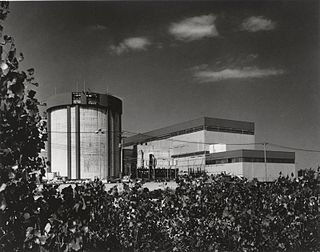
Zion Nuclear Power Station was the third dual-reactor nuclear power plant in the Commonwealth Edison (ComEd) network and served Chicago and the northern quarter of Illinois. The plant was built in 1973, and the first unit started producing power in December 1973. The second unit came online in September 1974. This power generating station is located on 257 acres (104 ha) of Lake Michigan shoreline, in the city of Zion, Lake County, Illinois. It is approximately 40 direct-line miles north of Chicago, Illinois and 42 miles (68 km) south of Milwaukee, Wisconsin.

Columbia Generating Station is a nuclear commercial energy facility located on the Hanford Site, 10 miles (16 km) north of Richland, Washington. It is owned and operated by Energy Northwest, a Washington state, not-for-profit joint operating agency. Licensed by the Nuclear Regulatory Commission in 1983, Columbia first produced electricity in May 1984, and entered commercial operation in December 1984.

The Palisades Nuclear Generating Station was a nuclear power plant located on Lake Michigan, in Van Buren County's Covert Township, Michigan, on a 432-acre (175 ha) site 5 miles (8.0 km) south of South Haven, Michigan, USA. Palisades was owned and operated by Entergy. It had been operated by the Nuclear Management Company and owned by CMS Energy Corporation prior to the sale completed on April 11, 2007.
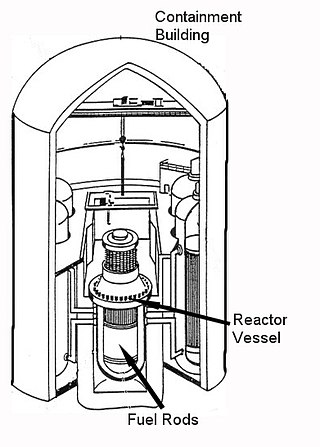
A containment building is a reinforced steel, concrete or lead structure enclosing a nuclear reactor. It is designed, in any emergency, to contain the escape of radioactive steam or gas to a maximum pressure in the range of 275 to 550 kPa. The containment is the fourth and final barrier to radioactive release, the first being the fuel ceramic itself, the second being the metal fuel cladding tubes, the third being the reactor vessel and coolant system.

Spent fuel pools (SFP) are storage pools for spent fuel from nuclear reactors. They are typically 40 or more feet (12 m) deep, with the bottom 14 feet equipped with storage racks designed to hold fuel assemblies removed from reactors. A reactor's local pool is specially designed for the reactor in which the fuel was used and is situated at the reactor site. Such pools are used for short-term cooling of the fuel rods. This allows short-lived isotopes to decay and thus reduces the ionizing radiation and decay heat emanating from the rods. The water cools the fuel and provides radiological protection from its radiation.

High-level waste (HLW) is a type of nuclear waste created by the reprocessing of spent nuclear fuel. It exists in two main forms:

A deep geological repository is a way of storing hazardous or radioactive waste within a stable geologic environment. It entails a combination of waste form, waste package, engineered seals and geology that is suited to provide a high level of long-term isolation and containment without future maintenance. This will prevent any radioactive dangers. A number of mercury, cyanide and arsenic waste repositories are operating worldwide including Canada and Germany and a number of radioactive waste storages are under construction with the Onkalo in Finland being the most advanced.

Spent nuclear fuel, occasionally called used nuclear fuel, is nuclear fuel that has been irradiated in a nuclear reactor. It is no longer useful in sustaining a nuclear reaction in an ordinary thermal reactor and depending on its point along the nuclear fuel cycle, it may have considerably different isotopic constituents. The term "fuel" is slightly confusing, as it implies a combustion of some type, which does not occur in a nuclear power plant. Nevertheless, this term is generally accepted.

Yankee Rowe Nuclear Power Station was a nuclear power plant in Rowe, Massachusetts, located on the Deerfield River in the town of Rowe in western Massachusetts. Its 180 MWe pressurized water reactor operated from 1961 to 1991. It produced electricity for New England consumers. The site is referred to as "Yankee-Rowe" or simply "Rowe", to avoid confusion with Vermont Yankee, another nuclear power station located in nearby Vernon, Vermont. The decommissioning of the site was completed in 2007.

Nuclear decommissioning is the process leading to the irreversible complete or partial closure of a nuclear facility, usually a nuclear reactor, with the ultimate aim at termination of the operating licence. The process usually runs according to a decommissioning plan, including the whole or partial dismantling and decontamination of the facility, ideally resulting in restoration of the environment up to greenfield status. The decommissioning plan is fulfilled when the approved end state of the facility has been reached.
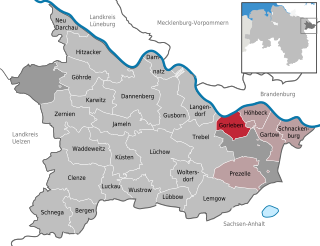
Gorleben is a small municipality (Gemeinde) in the Gartow region of the Lüchow-Dannenberg district in the far north-east of Lower Saxony, Germany, a region also known as the Wendland.

La Crosse Boiling Water Reactor (LACBWR) is a retired Boiling Water Reactor (BWR) nuclear power plant located near La Crosse, Wisconsin in the small village of Genoa, in Vernon County, Wisconsin, approximately 17 miles south of La Crosse along the Mississippi River. It was located directly adjacent to the coal-fired Genoa Generating Station. The site is owned and was operated by the Dairyland Power Cooperative (DPC).

A nuclear flask is a shipping container that is used to transport active nuclear materials between nuclear power station and spent fuel reprocessing facilities.
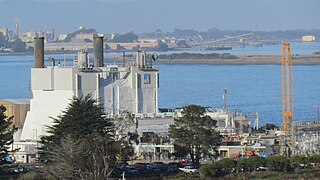
The Humboldt Bay Power Plant, Unit 3 was a 63 MWe nuclear boiling water reactor, owned by Pacific Gas and Electric Company that operated from August 1963 to July 1976 just south of Eureka, California.
Nuclear entombment is a method of nuclear decommissioning in which radioactive contaminants are encased in a structurally long-lived material, such as concrete. This prevents radioactive material and other contaminated substances from being exposed to human activity and the environment. Entombment is usually applied to nuclear reactors, but also some nuclear test sites. Nuclear entombment is the least used of three methods for decommissioning nuclear power plants, the others being dismantling and safe enclosure. The use of nuclear entombment is more practical for larger nuclear power plants that are in need of both long and short term burials, as well as for power plants which seek to terminate their facility licenses. Entombment is used on a case by case basis because of its major commitment with years of surveillance and complexity until the radioactivity is no longer a major concern, permitting decommissioning and ultimate unrestricted release of the property. Considerations such as financial backing and the availability of technical know-how are also major factors.
